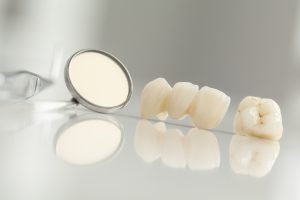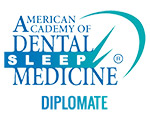 It’s a new year and you’re excited about the possibilities, one being the chance to get a beautiful smile. This is something you’ve been wanting for years but never really committed to making happen. As a result, you’ve experienced a drop in your self-esteem and would like to regain it. That’s why your cosmetic dentist of State College has some exciting information to share that will assist in making your dreams become a reality through the wonders of cosmetic dentistry.
It’s a new year and you’re excited about the possibilities, one being the chance to get a beautiful smile. This is something you’ve been wanting for years but never really committed to making happen. As a result, you’ve experienced a drop in your self-esteem and would like to regain it. That’s why your cosmetic dentist of State College has some exciting information to share that will assist in making your dreams become a reality through the wonders of cosmetic dentistry.
January 10, 2018
New Year New Smile from Your Cosmetic Dentist of State College
December 12, 2017
Emergency Dentist in State College Says Don’t Panic – Have a Plan
 If there’s one thing we can all agree upon, it’s that emergencies never happen when we are completely on the lookout for them. As a matter of fact, they tend to occur when we are least prepared. And that can easily cause a state of panic. But your emergency dentist in State College says that you should plan accordingly, so that in the event of a dental emergency, you’ll know what steps to take. Read on to learn what your options are.
If there’s one thing we can all agree upon, it’s that emergencies never happen when we are completely on the lookout for them. As a matter of fact, they tend to occur when we are least prepared. And that can easily cause a state of panic. But your emergency dentist in State College says that you should plan accordingly, so that in the event of a dental emergency, you’ll know what steps to take. Read on to learn what your options are.
October 17, 2017
Understanding Dental Insurance
 You’ve been told you need a dental filling. How much will that cost? Will my insurance cover it? If my tooth doesn’t hurt, do I really need that treatment? All these questions are running through your mind after your diagnosis, and rightfully so. If only you had a better understanding of how your dental insurance works! Read on, because now you will.
You’ve been told you need a dental filling. How much will that cost? Will my insurance cover it? If my tooth doesn’t hurt, do I really need that treatment? All these questions are running through your mind after your diagnosis, and rightfully so. If only you had a better understanding of how your dental insurance works! Read on, because now you will.
September 11, 2017
Chipped Tooth? Your Dentist Offers Guidance on What to Do
 You’re enjoying your favorite snack when — ouch! Or maybe you’re playing a vigorous game of basketball when you take a blow to the face. You know right away that you chipped a tooth. Not only are you in pain, but you felt part of the tooth leave its proper place. A broken tooth is nothing to take lightly. If you don’t handle the situation correctly, you’ll be uncomfortable and may even develop an infection. What should you do if you have a chipped tooth?
You’re enjoying your favorite snack when — ouch! Or maybe you’re playing a vigorous game of basketball when you take a blow to the face. You know right away that you chipped a tooth. Not only are you in pain, but you felt part of the tooth leave its proper place. A broken tooth is nothing to take lightly. If you don’t handle the situation correctly, you’ll be uncomfortable and may even develop an infection. What should you do if you have a chipped tooth?
August 30, 2017
Your First Children’s Dentistry Appointment
 The majority of patients who fear the dentist report a negative childhood dental experience caused their phobia. At Donald Marks Family Dentistry, we go above and beyond to ensure every single patient is completely comfortable in our office – and that includes children! We love working with young patients. Our team members chose to enter the dental field because we care about people and want to help them keep their smiles healthy. We want young patients to love visiting our office and caring for their smiles at home. Keep reading to find out more about children’s dentistry or contact our State College dental team to schedule your child’s first appointment today.
The majority of patients who fear the dentist report a negative childhood dental experience caused their phobia. At Donald Marks Family Dentistry, we go above and beyond to ensure every single patient is completely comfortable in our office – and that includes children! We love working with young patients. Our team members chose to enter the dental field because we care about people and want to help them keep their smiles healthy. We want young patients to love visiting our office and caring for their smiles at home. Keep reading to find out more about children’s dentistry or contact our State College dental team to schedule your child’s first appointment today.
(more…)
August 9, 2017
What Does a Restorative Dentist Do?
 We all work hard to keep our smiles healthy with daily brushing and flossing and regular trips to the dentist, but even the most diligent oral hygiene routine can have gaps that allow for tooth decay or damage. That’s where a restorative dentist comes into play. A good restorative dentist will provide treatments that preserve the maximum amount of natural tooth structure and recreate lost dental shape and function. A restorative dentist does all of this while keeping in mind the way any treatment will impact the appearance of the smile and overall health. Suffice to say, finding a good restorative dentist is key to keeping a healthy, happy smile on your face. The good news is, the general dentist you trust with your routine oral health and hygiene visits is likely also a skilled restorative dentistry practitioner.
We all work hard to keep our smiles healthy with daily brushing and flossing and regular trips to the dentist, but even the most diligent oral hygiene routine can have gaps that allow for tooth decay or damage. That’s where a restorative dentist comes into play. A good restorative dentist will provide treatments that preserve the maximum amount of natural tooth structure and recreate lost dental shape and function. A restorative dentist does all of this while keeping in mind the way any treatment will impact the appearance of the smile and overall health. Suffice to say, finding a good restorative dentist is key to keeping a healthy, happy smile on your face. The good news is, the general dentist you trust with your routine oral health and hygiene visits is likely also a skilled restorative dentistry practitioner.
(more…)
June 12, 2017
Your Dentist in State College Discusses Oral Health and Heart Disease
 Want to have a healthy heart? Then take care of your teeth and gums. Good oral health practices don’t only benefit your smile and help you avoid tooth decay, but they can also be a key to maintaining your overall health—especially heart health. Read on to learn how oral health and heart disease are linked and how your dentist in State College, Dr. Donald Marks, can help keep you and your smile in great shape.
Want to have a healthy heart? Then take care of your teeth and gums. Good oral health practices don’t only benefit your smile and help you avoid tooth decay, but they can also be a key to maintaining your overall health—especially heart health. Read on to learn how oral health and heart disease are linked and how your dentist in State College, Dr. Donald Marks, can help keep you and your smile in great shape.
May 26, 2017
Why Does My TMJ in State College Keep Causing Me Dental Pain?
 Do you wake up in the morning suffering from pain in your jaws constantly? If so, you may have a TMJ disorder. Temporomandibular joint disorder, or a TMJ in State College, is a when your jaw muscles and supporting nerves are malfunctioning because of an injury or misalignment of the temporomandibular joint. You don’t have to suffer from this painstaking malfunction. If you’re seeing relief, consider visiting Donald Marks Family Dentistry.
Do you wake up in the morning suffering from pain in your jaws constantly? If so, you may have a TMJ disorder. Temporomandibular joint disorder, or a TMJ in State College, is a when your jaw muscles and supporting nerves are malfunctioning because of an injury or misalignment of the temporomandibular joint. You don’t have to suffer from this painstaking malfunction. If you’re seeing relief, consider visiting Donald Marks Family Dentistry.
April 2, 2017
Experiencing Jaw Pain? Learn About TMJ in State College
 Temporomandibular joint disorder—usually called TMJ or TMD–impacts the joints that hinge the lower or mandibular jaw and the temporal bone of the skull. You can locate these joints easily by placing your fingers on either side of your face just in front of your ears. Open and close your mouth a couple of times and you’ll feel these joints working. When functioning properly, the temporomandibular joints allow you to open and close your mouth smoothly, so you can speak, eat, laugh and yawn. However, a malfunctioning joint can cause pain and discomfort. Fortunately, treatment for TMJ in State College is as close as the dentist’s office. Dr. Donald Marks will be able to determine whether or not you have TMJ and treat accordingly.
Temporomandibular joint disorder—usually called TMJ or TMD–impacts the joints that hinge the lower or mandibular jaw and the temporal bone of the skull. You can locate these joints easily by placing your fingers on either side of your face just in front of your ears. Open and close your mouth a couple of times and you’ll feel these joints working. When functioning properly, the temporomandibular joints allow you to open and close your mouth smoothly, so you can speak, eat, laugh and yawn. However, a malfunctioning joint can cause pain and discomfort. Fortunately, treatment for TMJ in State College is as close as the dentist’s office. Dr. Donald Marks will be able to determine whether or not you have TMJ and treat accordingly.
March 30, 2017
Dental Bridges in State College: What to Expect
 Decaying, cracked or missing teeth affect your appearance, oral health, and function. When natural tooth structure is failing or absent altogether, dental bridges and crowns in State College from Donald Marks Family Dentistry return smiles to full health and natural-looking appearance. And, your restorative dentist, Dr. Marks or Dr. Martin, makes it so easy and quick, you’ll be delighted.
Decaying, cracked or missing teeth affect your appearance, oral health, and function. When natural tooth structure is failing or absent altogether, dental bridges and crowns in State College from Donald Marks Family Dentistry return smiles to full health and natural-looking appearance. And, your restorative dentist, Dr. Marks or Dr. Martin, makes it so easy and quick, you’ll be delighted.




